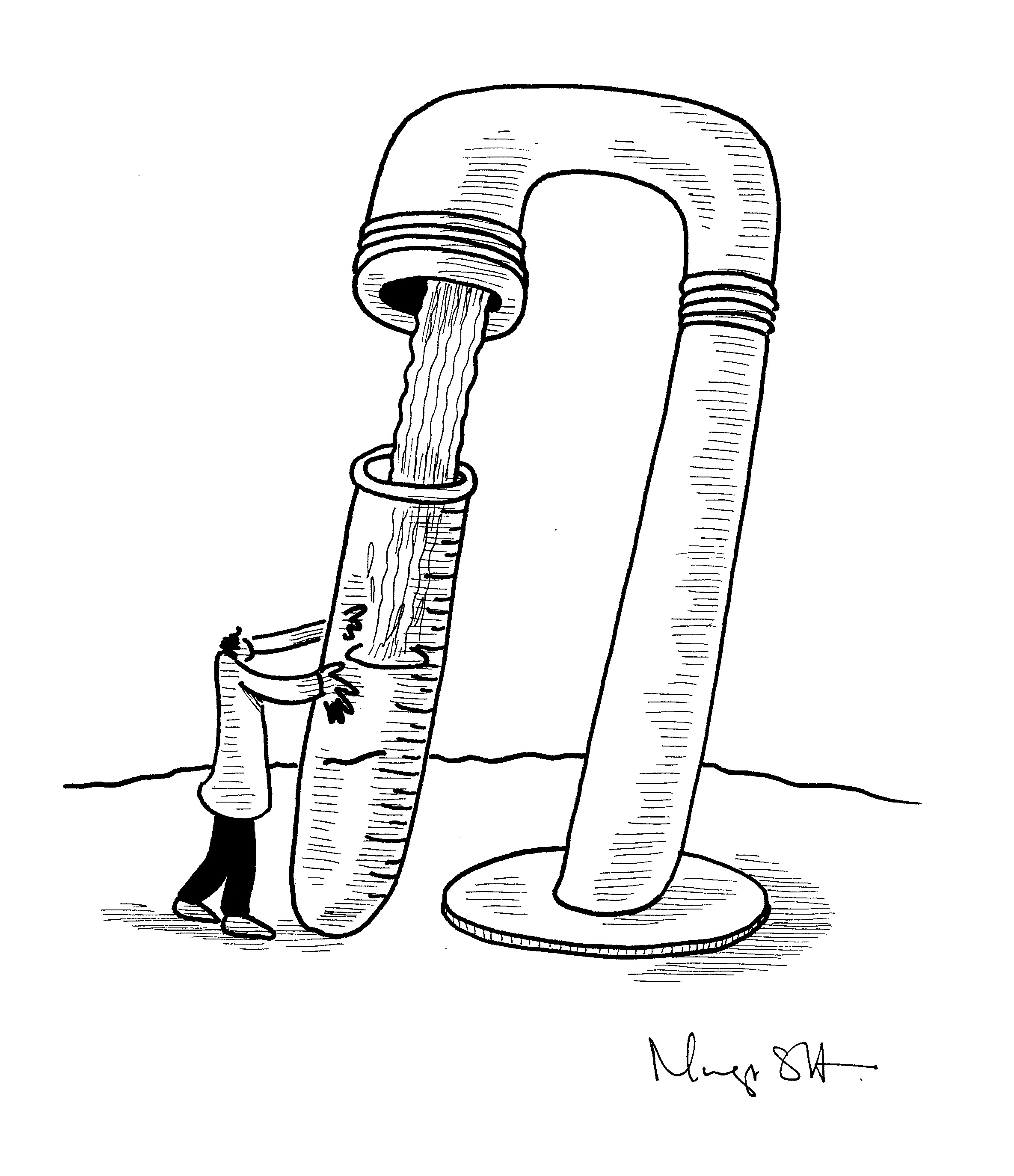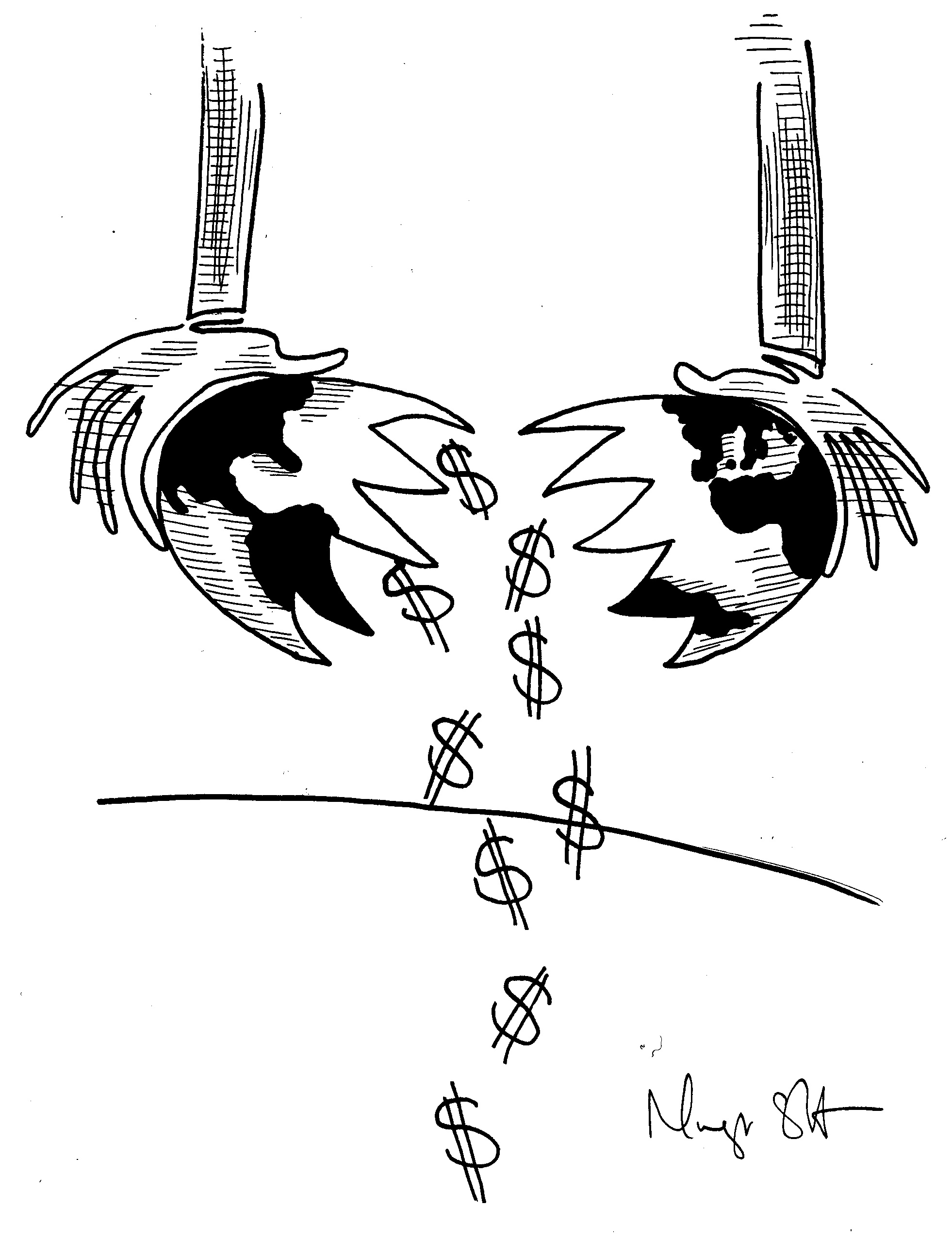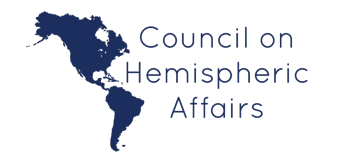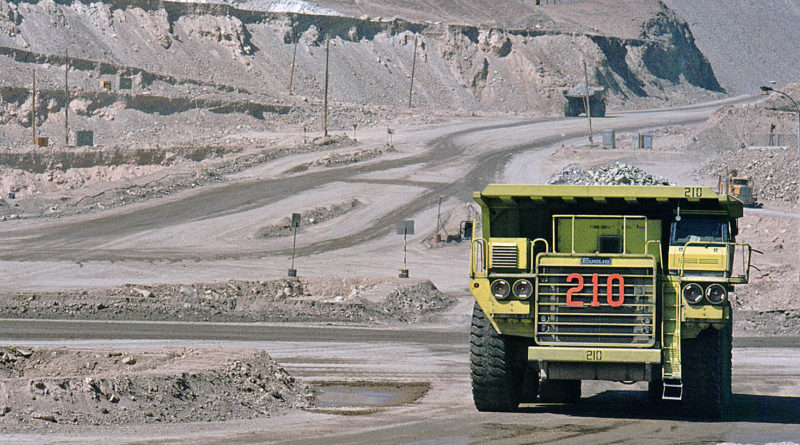For the Love of Water: The Ban on Mining in El Salvador
By: Lynn Holland, Senior Research Fellow at the Council on Hemispheric Affairs
This is Part II of a three-part series on the enactment of mining restrictions in Central America.
For some time now, U.S. and Canadian mining companies have been seeking out new mining sites in Latin America and elsewhere in the developing world. This is partly because high-grade ores that are easily accessible in the U.S. and Canada are in the process of being used up. It is also due to expensive litigation and mitigation costs that mining companies must undertake in developed countries. Not long ago, Salvadorans welcomed foreign owned mining companies into their country. Yet for the last several years, metal mining has been banned in El Salvador by presidential decree and citizen groups are now working to enact a permanent nationwide ban on such undertaking.
With six million people, El Salvador is the smallest and most densely populated country in Central America, as well as the most water-scarce. It also is one of the most environmentally degraded countries in Latin America. A period of rapid urbanization and industrialization in the 1990s deprived the country of about 20 percent of its subsurface water. Today, over 90 percent of its surface water is contaminated with industrial chemicals, making it unsuitable to drink even if the water is boiled, chlorinated or filtered beforehand.
In order to extract tiny particles of gold, mining companies have to apply a leaching process that involves the use of cyanide and enormous amounts of water. As NACLA reported in 2011, “the average metallic mine uses 24,000 gallons of water per hour, or about what a typical Salvadoran family consumes in 20 years.” In less developed countries where regulatory agencies are weak and water scarce, then metal mining can have serious public health and environmental consequences.
Back in 1992, after a lengthy and devastating civil war, reformed-minded Salvadorans were eager to rebuild their conflicted ravaged country. In the years that followed, the rate of economic growth was well above the average for Latin American countries. Investment levels rose from $30 million USD in 1992 to $5.9 billion USD in 2008, much of it in mining. The expectation was that the sector would create jobs, stimulate growth, promote development and increase government revenue. In fact, these goals were specified in the preamble of the Mining Law of 1996.
The preamble also expressed the intention that the mining process be “convenient for investors in the mining sector.” Consistent with this, a 2001 amendment to the Mining Law increased the amount of territory that could be granted to mining companies while decreasing government royalty from 3 percent to 1 percent. In addition, the Investment Law of 1999 allowed foreign companies to sue the Salvadoran government through, the International Centre of Settlement Investment Disputes (ICSID), and tribunal housed by the World Bank. Clearly, the government was competing hard to attract mining investments.
Seduced and abandoned
According to Canadian-owned Pacific Rim Corporation, the government threw out the welcome mat when it showed up in hopes of exploring for gold. Long engaging conversations between the government and company officials took place and there was careful adaptation of the country’s laws to accommodate the company. In fact, as a member of Pacific Rim’s Board of Directors later explained, El Salvador had “very friendly mining laws… which we, as a matter of fact, had a hand in helping the government draft so that El Salvador would be open and receptive to mining investment and allow deposits to be developed in a timely way.”
At the same time, the Mining Law required extractive companies to submit an environmental impact assessment (EIA) of the proposed project and to shoulder enormous costs not only in constructing the mine, but also “to prevent, control, minimize and compensate the negative effects that might be caused to local residents or the environment….” This meant assuring that all waters returned to the waterways were “free of contamination, so that they do not affect human health or the development of animal or plant life.”
In 2002, while relations were still cordial, the Salvadoran government encouraged Pacific Rim to apply for a permit for exploration, as a preliminary step to receiving permission for extraction. Once the permit was in hand, the company invested tens of millions of dollars in exploration and soon was able to discover a rich deposit of gold along the headwaters of the Lempa River in the department of Cabañas. The Lempa, El Salvador’s longest and only navigable river, supplies over half the country with water and allows many to make a basic living through agriculture and fishing.
Soon after, however, the romance between Pacific Rim Corporation and the Salvadoran government began to grow cold. In late 2004, the Pacific Rim Corporation applied for the extraction permit, but the permit was denied “presumptively.” Government officials say that the company had not fulfilled three requirements: government approval of its environmental impact study, a feasibility study and development plan, and possession of the necessary titles to the land at the proposed mining site. At the time, Pacific Rim held less than 13 percent of the area designated for the mine.
According to Robin Broad of American University, company officials were confident that they could work around this last requirement. As she puts it, “Pac Rim was working with President (Antonio) Saca’s vice-president and others to eliminate the requirement that it hold all relevant land titles,” by amending or replacing the applicable mining law in the legislature. That the company intended to participate in making the needed amendments should be no surprise given that it had worked closely with officials in writing the original Mining Law in the first place.
Salvadoran politics were entering a new phase, however. By 2007, the government had revoked an exploratory permit held by the Commerce Group after a study showed high levels of cyanide and sulfur leaching into the San Sebastian River from one of its mines. The mine site had been closed ten years before. The following year, President Saca, member of the right-wing ARENA party and one-time supporter of mining interests, announced a moratorium on new mining permits. The two subsequent presidents, both members of the left-wing FMLN party, have since continued the ban by means of a presidential decree.
Outraged by Saca’s rebuff, Pacific Rim proceeded to sue the Salvadoran government in the ICSID, citing the rules of the Central American Free Trade Agreement (CAFTA). Because Pacific Rim was a Canadian company at the time, it was not covered by CAFTA and so it proceeded to reincorporate its Cayman Islands subsidiary (which owned the Salvadoran operations) in Nevada. With a subsidiary then relocated in the U.S., Pacific Rim was able to claim that the government’s failure to grant the extraction permit was a CAFTA violation and thereby lodge a demand for $77 million USD in compensation. This amount was later increased to $301 million USD. In 2012, ICSID dismissed the claims related to CAFTA, but accepted jurisdiction over claims based on investment law applicable in El Salvador. The following year the financially struggling company was taken over by Australian-owned OceanaGold.
In filing the case, Pacific Rim argued that the company had been led on. It was, after all, “precisely the kind of investor El Salvador was looking for: a foreign investor with the funding, mining industry know-how, and mineral exploration expertise necessary” to bring the Cabañas mine into production. Furthermore, the company had worked hard to “integrate itself into the communities” near the project, hosting many informational gatherings and tours of the facilities, building roads, drilling for water, sponsoring educational programs, health clinics and sporting events, and planting over 40,000 trees. So after years of close relations during which Pacific Rim “understood that it was dealing with a ‘top down’ political structure,” the presidential rebuff came as unforeseen and disruptive blow.
The environmental movement
From its grassroots beginnings, the environmental movement in El Salvador has gained considerable influence over the years. In Cabañas, Antonio Pacheco, director of the Association for Economic and Social Development (ADES), a local civic organization, initially thought that a mine would bring new jobs and thereby reduce poverty. Soon, however, ADES was addressing complaints about water quality and diseased livestock that were being ignored by government agencies. He and his organization began to work with other environmental groups and in 2004 organized a mining forum to discuss the long-term impacts of mining in El Salvador.
In 2005, ADES invited U.S. hydro geologist Robert Moran to conduct an independent review of Pacific Rim’s explorations. In his review, Moran found that the official company study had failed to include baseline information regarding water quality and quantity. “The cost for water was zero,” he said in a recent interview. As such, the company had failed to assess the costs to the community in utilizing large quantities of the local water supply. Moran also concluded that the Pacific Rim EIA had ignored many environmental impacts evident at existing gold mines and would be unacceptable to regulatory agencies in most developed countries. Moran made note that the EIA review process lacked openness and transparency, that only one printed copy of the 1400 page document had been made available to the public (much of it only in English), and that a period of only ten working days had been set aside for public review.
Over the next two years, environmental activists from Cabañas and other areas traveled to Honduras and Guatemala to visit mining sites in those countries. These included an abandoned gold mine in Valle de Siria in Honduras, which revealed “widespread deforestation, catastrophic loss of surface water resources, polluted waters, and respiratory and skin ailments of people living nearby.” My own tour of Valle de Siria in 2013 confirmed these findings and included the shocking sight of herds of emaciated cattle struggling to survive in parched fields.
Around the same time, ADES, with the help of Oxfam International and other NGOs, founded the National Roundtable Against Metal Mining (also called The “Roundtable”). The first major coalition of its kind in El Salvador, The Roundtable vigorously publicized the conditions at Valle de Siria and elsewhere through public education, speaking events and marches. In time, the organization opted to make the passage of a national ban on metal mining its chief goal.
 By 2006, the tide was beginning to turn against the mining interests. A group of researchers from the University of El Salvador conducted a study of waterways in and around the abandoned mine owned by the Commerce Group. They reported cadmium levels that were 72 times those recommended by the U.S. Environmental Protection Agency (EPA) and mercury that was 36 times the EPA recommended level. The Roundtable subsequently led the way in filing a lawsuit against the company.
By 2006, the tide was beginning to turn against the mining interests. A group of researchers from the University of El Salvador conducted a study of waterways in and around the abandoned mine owned by the Commerce Group. They reported cadmium levels that were 72 times those recommended by the U.S. Environmental Protection Agency (EPA) and mercury that was 36 times the EPA recommended level. The Roundtable subsequently led the way in filing a lawsuit against the company.
Around the same time, an “unusual and farsighted alliance grew” between the Ministries of Economy and Environment around the need to do a strategic environmental review of metal mining. As the environmental minister told the legislature, “We will only permit mining exploitation if the companies mitigate 100 percent of the harm, which would be impossible, since that would require greater investment than the total gold and silver reserves.” With this, an informal ban on metal mining was underway.
The Catholic Church in El Salvador followed suit in 2007 when seven bishops and an archbishop came out with a formal proclamation in favor of a national ban. Later that year, university polls showed that 62.4 percent of Salvadorans were opposed to mining in El Salvador.
Environmental activists paid a price for these advances, however. Richard Steiner, a conservationist at the University of Alaska, documented increasing violence directed at local environmental activists from 2004 when “community opposition to the mine commenced in Cabañas.” This included threats, assault, kidnapping, and the murder of three activists in 2009. A pro-mining businessman was also murdered at that time under complicated circumstances. The staff of a community-run radio station opposed to gold mining told how they had been harassed and threatened. Steiner also described, “serious shortcomings with judicial follow-through with regard to crimes committed against mine opponents.”
At the same time, Roundtable activists’ tactics have also been criticized. The words “Death to Canadian Miners” have appeared on circulated fliers and there have been reports of harassment of Pacific Rim employees. For their part, Roundtable leaders have denounced any use of violence as part of their campaign.
The case against ICSID
To date, each side has spent millions of dollars presenting its case before the ICSID court. If the Salvadoran government loses, it could be required either to allow the Cabañas mining project to proceed or to pay $301 million USD to Pacific Rim. This might amount to about 5 percent of the GDP in El Salvador, one of the poorest countries in the Western Hemisphere. Government leaders have said that they will pay up if necessary just to keep the mining industry out of their country. But they fear that a loss in ICSID could result in a rash of new lawsuits and loss of control over the development process.
In my interview with him, Bob Moran criticized the remote and legalistic nature of ICSID. “We’ve allowed a system to evolve where all the assessments are done within forums that international business interests have produced,” he said. “They’ve also had a lot of influence in the wording of the international trade agreements” that the court relies on. “Forget the legal stuff,” he continued. “The EIA is technically unacceptable – it is a corrupt document that would have been unacceptable anywhere.” And while business is making profits, he went on, we’re socializing the costs. “The average life of a gold mine is less than fifteen years.” After that, “you’re left with fixing whatever happened” whether it’s poisoned streams, deforested hillsides, or a sickened population.
forums that international business interests have produced,” he said. “They’ve also had a lot of influence in the wording of the international trade agreements” that the court relies on. “Forget the legal stuff,” he continued. “The EIA is technically unacceptable – it is a corrupt document that would have been unacceptable anywhere.” And while business is making profits, he went on, we’re socializing the costs. “The average life of a gold mine is less than fifteen years.” After that, “you’re left with fixing whatever happened” whether it’s poisoned streams, deforested hillsides, or a sickened population.
While Salvadorans await the outcome of the case, a new action plan for passing a nationwide ban has begun to unfold. In just the last year, several rural communities have passed their own prohibitions against metal mining. San Jose Las Flores, San Isidro Labrador and Nueva Trinidad, have all held popular consultations, which resulted in overwhelming approval for a ban in each case. As San Jose Las Flores mayor Felipe Tobar explained, “I want to encourage other municipal governments to ban mining in their territories and also encourage members of the legislative assembly to approve legislation to ban mining to ensure the long term sustainability of our environment.” Ten other municipalities have been targeted for future consultations.
~~~
In neighboring Honduras, the growth of the environmental movement has paralleled that of El Salvador’s in many ways. Community level concerns have come together with those of domestic and international NGOs. New restrictions were proposed and plans to establish a country-wide ban drew the support of the president just as it has been the case in El Salvador. Unfortunately, these plans already have come to abrupt halt when that president was unceremoniously ousted from office in 2009.
Part III covering events in Honduras will be published shortly.
By: Lynn Holland, Senior Research Fellow at the Council On Hemispheric Affairs
Please accept this article as a free contribution from COHA, but if re-posting, please afford authorial and institutional attribution. Exclusive rights can be negotiated. For additional news and analysis on Latin America, please go to: LatinNews.com and Rights Action.
Featured Photo: Coppermine Chuquicamata, Chile. Selbst Fotografiert.


